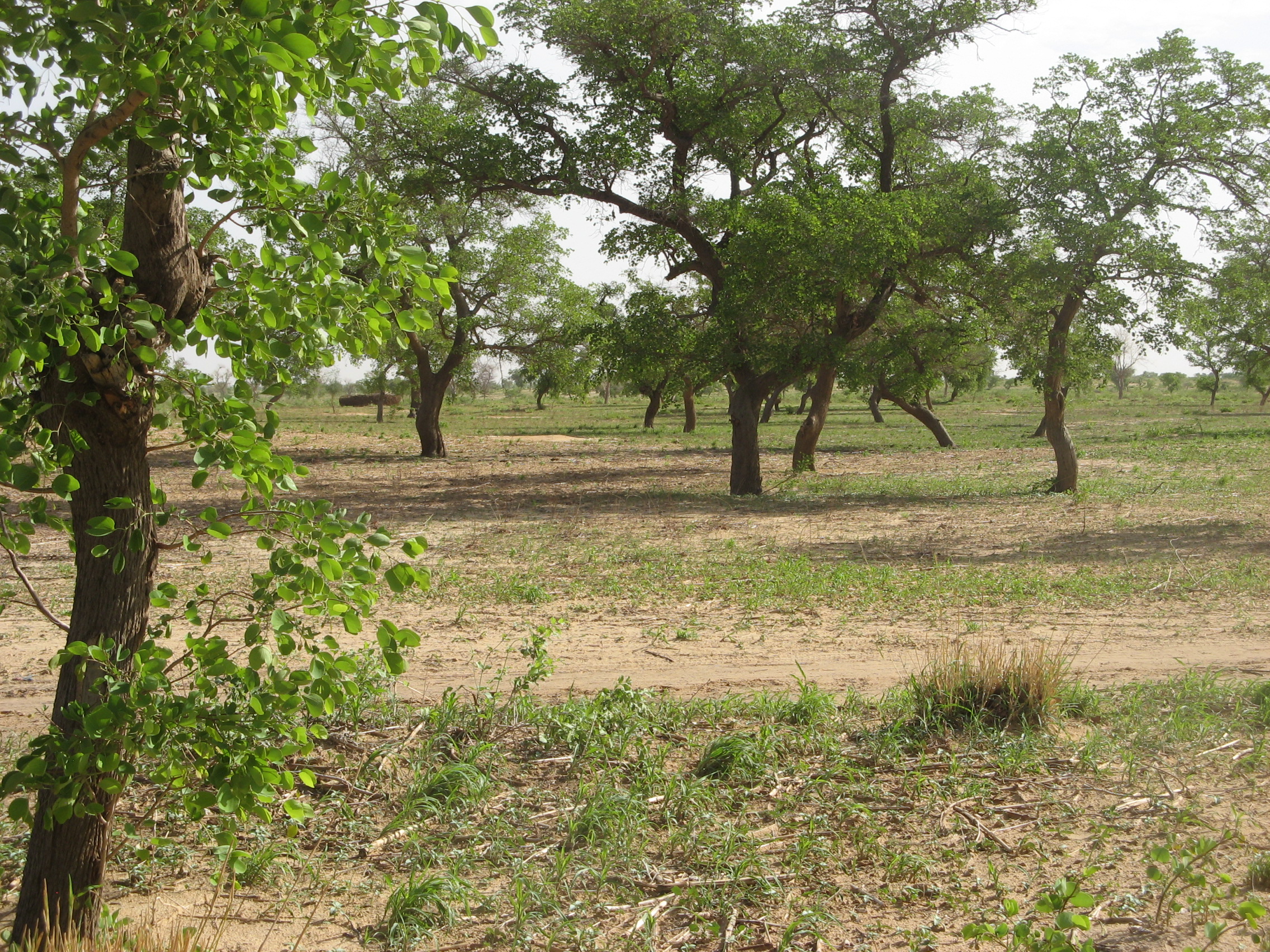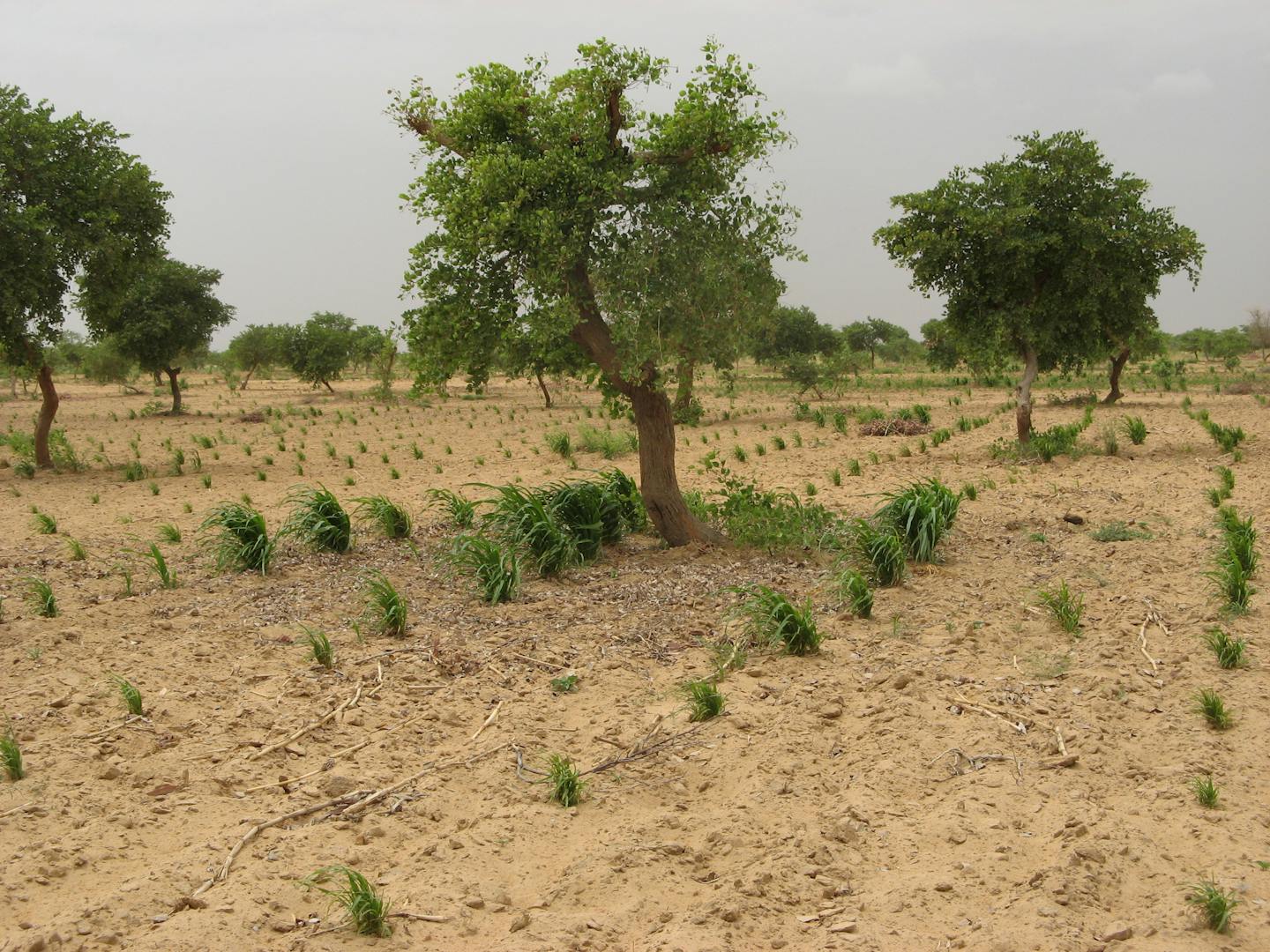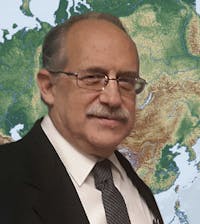Case study 10: farmer-managed natural regeneration of trees
- Regenerative Agriculture
- Regenerative Croplands
- Farm Afforestation
- Agroecology
- Smallholder Farming
- Sub-Saharan Afrotropics
- Afrotropics Realm
Tony Rinaudo, an agronomist working with Serving in Mission, had been working for years trying to plant trees in Niger. This was an important effort, in part to slow down the encroachment of the Sahara Desert, and in part to provide local people with a drought-proof income from the sale of firewood and timber. Until 1983, he’d had no luck at all. Plant nurseries failed because they require water just before the beginning of the rainy season, at precisely the time of year when it is most scarce, or because the tender seedlings could just not survive under Niger’s severe, semi-desert conditions. Growing trees from seed made them even more susceptible to drought and excessive heat.
Finally, one day, after years of fruitless effort, Tony was looking out across the dry, barren landscape, thinking about what he could try to do next, and wondering whether he should just give up. Suddenly, he noticed a little green tree sprout in a nearby field that was trying to get a start. Then he noticed another one a few feet away. And another!
What Tony discovered that fateful day not only exists all over Niger, but in most of the drought-prone areas of the tropical world. In these areas, there exist whole “underground forests” of tree roots, barely visible stumps and dormant seeds that farmers have, for generations, cut off, burned, or covered with soil in order to plant their crops. But these almost invisible underground forests are still alive. Tony simply needed to give them a chance to grow. He tried it. The result: in a few years—rather quickly, because the trees already had full-grown root systems—Tony had a forest.
To make a very long story short, together with World Vision/Australia, with which he now works, and dozens of other organizations that also recognized the tremendous new hope in Tony’s discovery, about 6 million previously barren hectares of Niger have been reforested. That sounds unbelievable, but Tony has satellite photos to prove it.
Tony is a wonderfully humble fellow. He would never say what I am going to say here. But his “Farmer-Managed Natural Regeneration” (FMNR) revolution is very likely the most astonishing, least expensive success in the whole history of agricultural development. Even more unbelievable, it was achieved in what is easily one of the most hostile environments, if not the most hostile environment, for agricultural development on the face of the earth.
All farmers have to do to adopt FMNR is to select the trees they most want to have in their fields, stop burning and cutting these trees, protect them from free-grazing animals for a year or two, protect them each year from bush fires, where they occur, and prune them so their new trees will have five stems or fewer and don’t produce too much shade for their crops.

The main species in these two photos is Philostigma reticulata here being managed in crop land which has been planted to millet.

This photo was taken during a drought year and you can see a distinct impact on the crop near the base of the tree. Research has found that this and other species exhibit hydraulic lift – they draw water from deep in the soil profile and ‘leak’ it at night through their shallow roots – within reach of the roots of nearby crops, effectively bio-irrigating the crop. Credit: Tony Rinaudo.
During the last ten years or so, Tony has been spreading FMNR across the rest of Africa and beyond. US Geological Survey results show that today there are eleven nations from Senegal east to Ethiopia and south to Malawi, including Niger, with an estimated total of 24 million hectares under FMNR. Some of this FMNR adoption has been achieved by smallholder farmers who discovered FMNR independently, in a few cases apparently even before Tony did. By far the largest part of it has resulted from spontaneous spread among farmers themselves from areas where it was originally introduced by development programs.
Large-scale, independent studies of FMNR have now verified that organic matter levels in the soils have improved, farmers’ crop yields have increased by an average of about 50%, and incomes have doubled because of the added sale of firewood. But most important, Niger’s smallholder farmers have begun experimenting with new crops and animals they can raise now that their soil has become more fertile and moist and the trees’ shade protects the land from the hot Sahelian sun.
Regenerating soils is therefore an example of what is called a “foundational technology.” If you bring in a new variety of maize, that is only going to help farmers produce more maize. On the other hand, if you teach farmers to regenerate their soil, you can provide a foundation for them to improve absolutely everything they might do on their farms. In modern terms, gm/ccs can create a “platform” that allows farmers to begin doing all sorts of new things. They can grow new plants and animals that will increase the amount of food available to their families, increase the nutritional value of what they eat, increase their incomes, increase their biomass production, increase the sustainability of their farming systems, improve the biodiversity of their farms, improve the drought-resistance of their farms, increase rural employment, and provide more food for hungry nations. At the same time, they will be sequestering more carbon, not only in the soil but in all those newly flourishing, age-old trees.
Just as San Martin’s farmers went from producing about 15 to 96 different species of market crops well after the outsiders left, hundreds of thousands of African farmers are starting to build on Tony’s FMNR platform to diversify their crops and animals, as well as their economies and their environment.
Many more new case studies are in the making.



